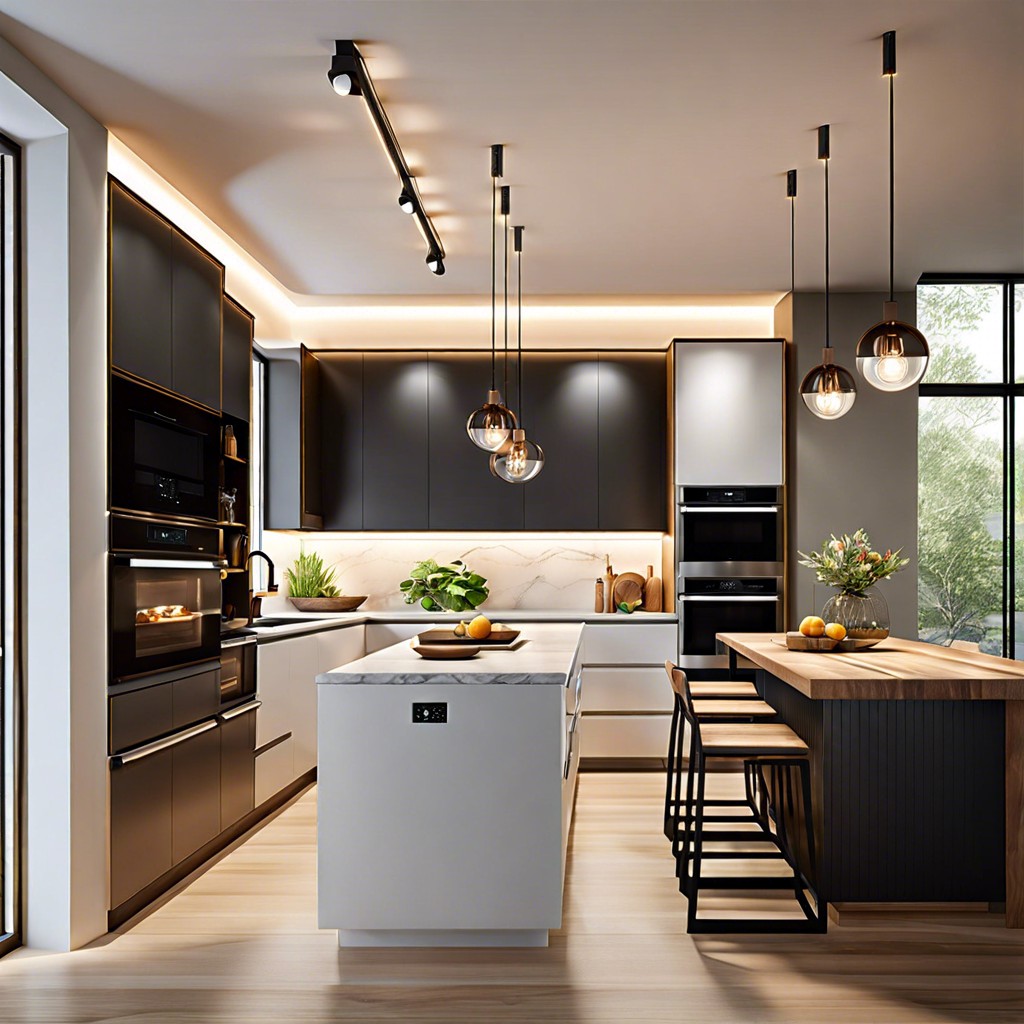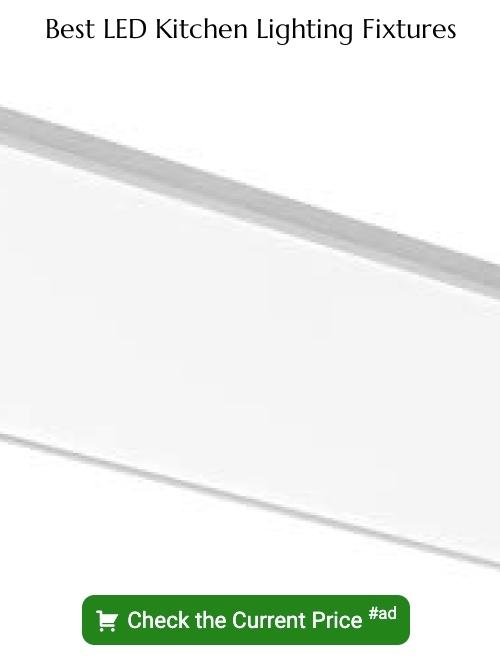Last updated on
Discover how to determine the perfect number of lumens needed for your kitchen to ensure it’s bright and functional.
Key takeaways:
- Lumens measure brightness, important for safety and ambiance.
- Consider kitchen size, tasks, and desired vibe for lighting.
- Small kitchens need 3,000-4,000 lumens, medium need 4,000-8,000 lumens, and large need 7,000-10,000 lumens.
- Cooking and cleaning tasks need 4,000-8,000 lumens, while dining and entertaining need 3,000-4,000 lumens.
- Pendant lights, under-cabinet lights, recessed lights, and track lights are great fixtures to consider.
What's Inside
What Are Lumens And Why Are They Important In The Kitchen?

Lumens measure the brightness of a light source. Imagine lumens as the superhero behind the scenes making everything visible. More lumens mean a brighter light, which is essential in a space where sharp knives and hot stoves come into play.
- Consider these points:
- Lumens give you a clear idea of brightness, unlike watts that only measure energy usage.
- Proper lighting helps avoid accidents. You don’t want to chop more than just the veggies!
- It enhances your kitchen’s ambiance. Think of lumens as the secret ingredient for a welcoming space.
In short, understanding lumens means you can whip up anything from a gourmet meal to a midnight snack without straining your eyes.
Factors To Consider When Choosing Lumens For Your Kitchen
First up, think about the size of your kitchen. A tiny nook might need fewer lumens, while a grand chef’s paradise needs more. Picture it: you don’t want to slice veggies in a dungeon or dine in an interrogation room. Balance is key.
Next, consider what you’re actually doing in the kitchen. Are you a coffee-connoisseur brewing the perfect cup at dawn or a maestro of meal prep? Different tasks demand different brightness. You wouldn’t fillet a fish with the same lighting you’d use to sip wine, right?
Lastly, think about the vibe. Do you want soft, cozy lighting for family dinners, or bright, focused beams to showcase your culinary masterpieces? Tailor the lumens to fit your kitchen’s personality and yours.
Kitchen Size
Think of your kitchen like a celebrity on the red carpet – size matters. A small kitchen doesn’t need as many lumens as a mega kitchen that could double as a ballroom.
– For small kitchens (under 70 square feet), around 3,000 to 4,000 lumens will do the trick. You want enough light to see what you’re doing without transforming your space into an interrogation room.
– Medium-sized kitchens (100-150 square feet) should aim for 4,000 to 8,000 lumens. This helps ensure that you’re not slicing and dicing in the shadows.
– If you own a spacious kitchen (over 150 square feet), you’ll need about 7,000 to 10,000 lumens. You might also want additional light layers for specific areas like the island or countertops.
So, remember: the bigger the kitchen, the more lumens you’ll need to keep it bright and functional.
Type of Task Being Performed
Different types of tasks in the kitchen require different lighting. Let’s face it, chopping veggies in a romantic dim light is a recipe for a trip to the ER. Here’s what to consider:
Meal Prep and Cooking: These tasks need focused, bright light. Aim for 4,000 to 8,000 lumens. Overhead lights and under-cabinet lights are your best friends here. Think of it as lighting your culinary stage.
Eating and Entertaining: Lower lumens create a cozy ambiance. Around 3,000 to 4,000 lumens is usually enough. Pendant lights over the dining table or dimmable overhead lights set the mood perfectly.
Cleaning: Scrubbing those pots and pans deserves efficient lighting too. Aim for 4,000 to 8,000 lumens to spot every last crumb. Good overhead lighting should do the trick.
Remember, layering your lighting can create a versatile and functional kitchen. Now, go forth and light up your culinary world.
Best Fixture Choices For All Types Of Kitchen Lighting
Pendant lights are like the jewelry of your kitchen: functional yet fabulous. They work wonders over islands and breakfast bars by providing focused task lighting while adding a stylish flair. Think of them as the earrings you never forget to wear.
Under-cabinet lights are a true game-changer. They illuminate countertops, making meal prep a lot easier. No more chopping onions in the dark. LED strips are a popular choice here; they’re efficient and practically glow with coolness.
For overall ambient lighting, recessed ceiling lights are a solid option. They give a uniform light spread, making sure there are no dark corners lurking with mystery ingredients. Opt for adjustable ones if possible, so you can focus light where needed.
Don’t underestimate chandeliers or statement fixtures for the center of the kitchen. They’re great for adding character while lighting up the entire room. Yes, you can be both bright and beautiful.
Finally, consider track lighting for versatility. These are like the Swiss Army knives of lighting. You can adjust the direction of each individual light to suit your needs, whether you’re showcasing your culinary skills or just trying to find that elusive can opener.
Ambient Lighting
You know that cozy, welcoming glow that makes your kitchen feel like the heart of the home? That’s ambient lighting in action. It’s the soft general lighting that fills the room, creating a comfortable atmosphere.
Here’s the scoop:
• Aim for around 3,000 to 4,000 lumens. This will give your kitchen that perfect warm blanket of light.
• Think ceiling fixtures, track lighting, or recessed lights. These are all great options to spread light evenly across the room.
• Don’t forget dimmers! They let you adjust the light intensity to set the mood, making your kitchen perfect for a lively family dinner or a serene late-night snack.
Ambient lighting sets the stage for everything else, creating the perfect foundation to add layers of functional and stylish lighting elements.
Task Lighting
Alright, time for some serious kitchen business! Task lighting is your culinary secret weapon, shedding light exactly where you need it, whether you’re chopping vegetables, reading a recipe, or trying not to cry over that onion.
– Under-cabinet lights are your best friend here. They illuminate countertops precisely, making food prep a breeze and giving you no excuse to nick a finger while dicing carrots.
– Over the stove, consider a light fixture like a range hood with built-in lights. It’s like giving your culinary skills a spotlight, minus the drama.
– Pendant lights work wonders over kitchen islands or breakfast bars. They provide focused light and can add a touch of style to your decor. Imagine them as the functional jewelry of your kitchen.
– Adjustable track lighting gives you the flexibility to point lights directly where you need them; it’s like having a personal lighting crew ready to highlight your every kitchen move.
Think of task lighting like a targeted flashlight for every key area, ensuring you can always see what you’re doing.





